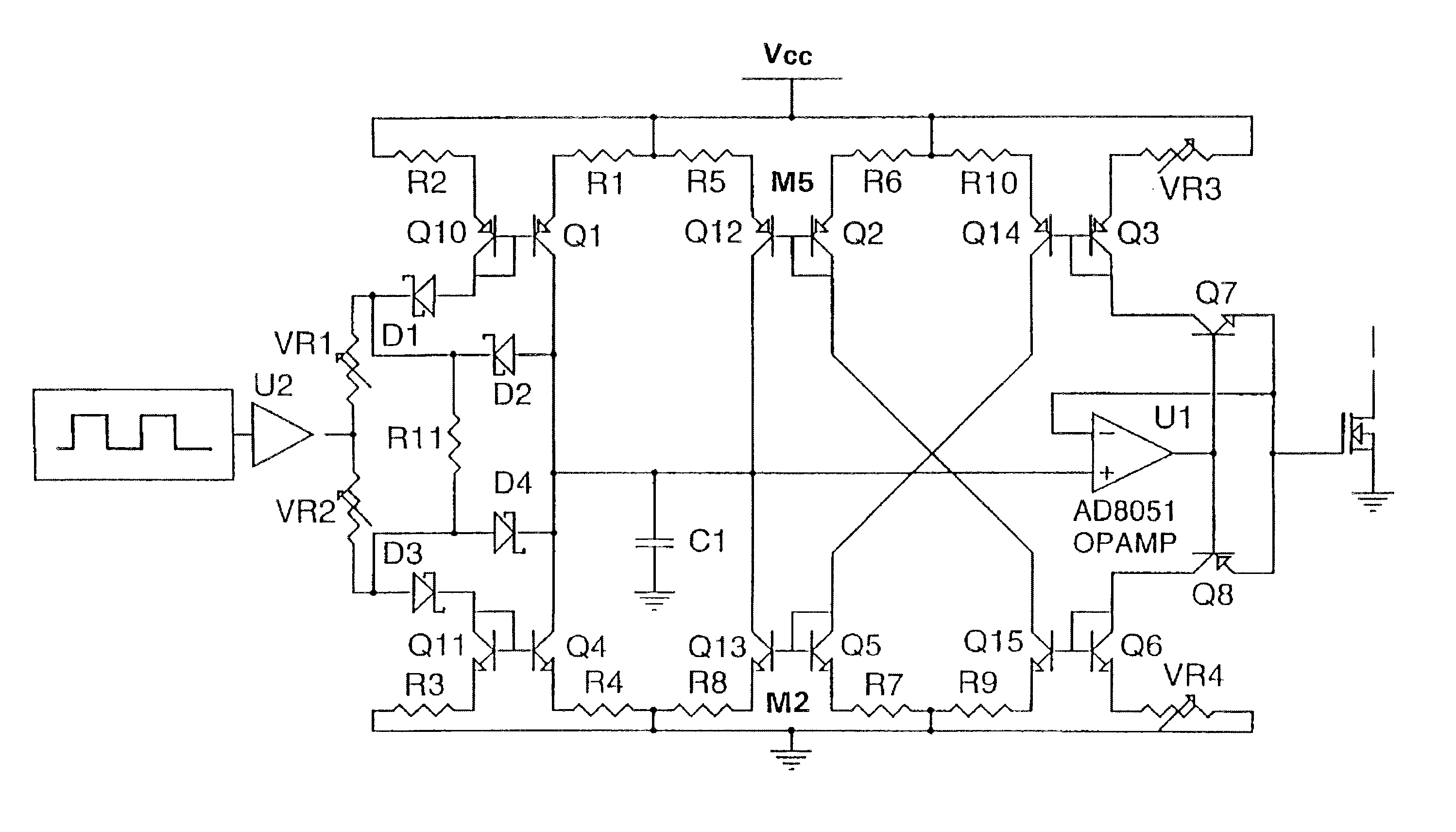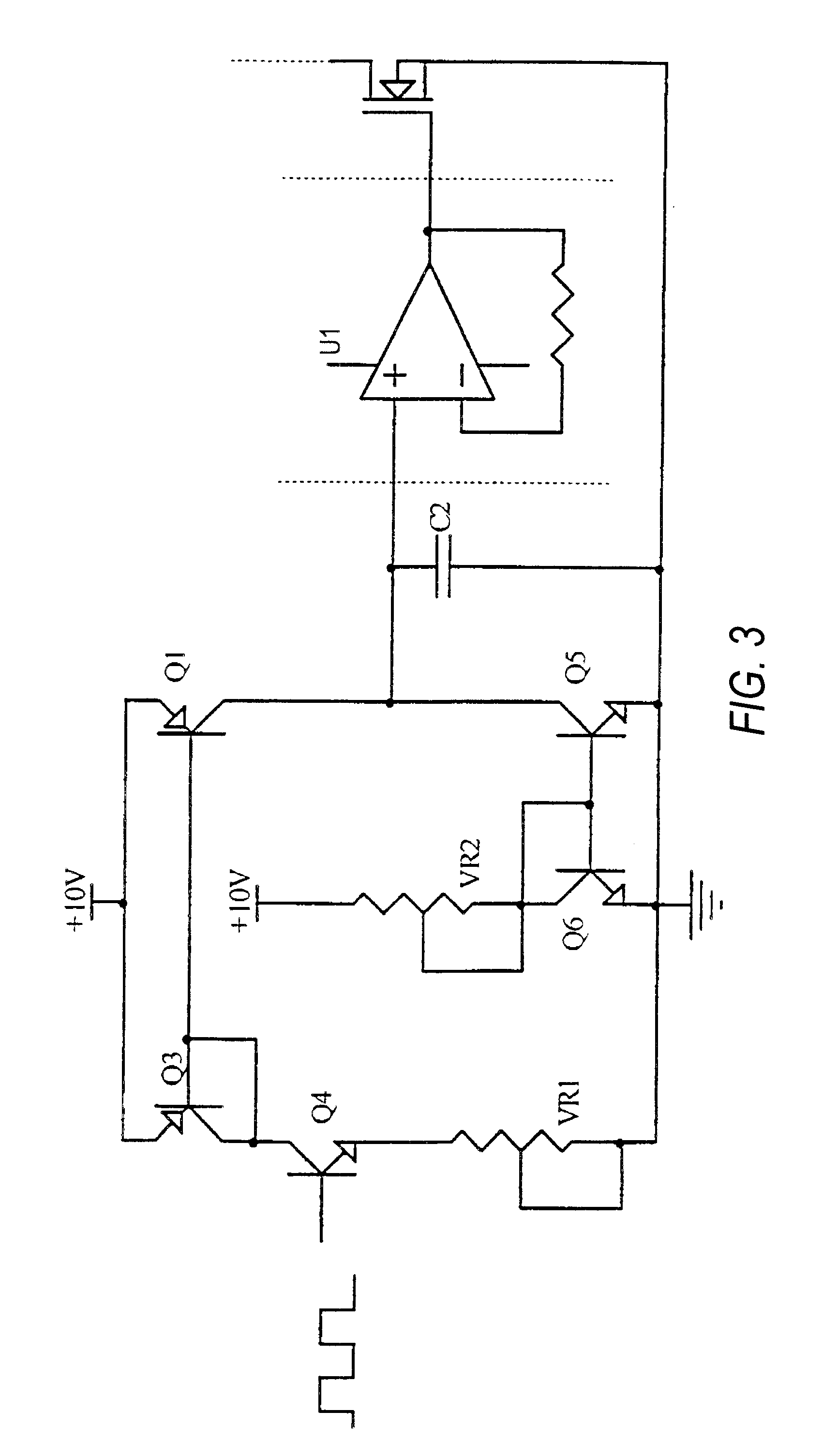Gate drive for insulated gate power semiconductors
a gate drive and power semiconductor technology, applied in the direction of electronic switching, power conversion systems, pulse techniques, etc., can solve the problems of significant change in magnetic flux, circuitry production, and difficult to meet the trade-off between electromagnetic interference (emi) and power loss, and achieve large concurrent improvements in both switching losses and emi, easily and individually controlled
- Summary
- Abstract
- Description
- Claims
- Application Information
AI Technical Summary
Benefits of technology
Problems solved by technology
Method used
Image
Examples
example 2
EMI Improvement for Turn-on
Referring to FIG. 6, a graphical representation of the near-field radiated emissions of the known driver (FIG. 1) and of the circuitry of the preferred embodiment, are thereshown for the same voltage switching times. The parameters are as set out below in Table 2.
FIG. 6 graphs the frequency spectrum obtained using an EMC analyser. The graph for the known, conventional driver is the line 61 and graph of the driver in accordance with the present invention is the line 62. The full improvement cannot be seen as the emission level from the invention reaches the noise floor of the measuring equipment before the conventional drive.
The above describes a preferred embodiment of the circuit for switch-on and is applicable to both MOSFETs and IGBTs.
Turn-Off
The circuit of FIG. 4 achieves similar improvements during turn-off as those shown for turn-on.
This applies fully to MOSFETs, but only to IGBTs during the miller effect and power mos phases. The dv.sub.ds / dt can b...
PUM
 Login to View More
Login to View More Abstract
Description
Claims
Application Information
 Login to View More
Login to View More - R&D
- Intellectual Property
- Life Sciences
- Materials
- Tech Scout
- Unparalleled Data Quality
- Higher Quality Content
- 60% Fewer Hallucinations
Browse by: Latest US Patents, China's latest patents, Technical Efficacy Thesaurus, Application Domain, Technology Topic, Popular Technical Reports.
© 2025 PatSnap. All rights reserved.Legal|Privacy policy|Modern Slavery Act Transparency Statement|Sitemap|About US| Contact US: help@patsnap.com



